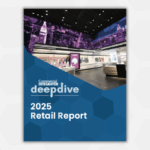Imagine being paid to play games all day. Sounds like a dream come true? It’s possible with workplace gamification.
If you’re the one cutting the paychecks, gamifying your workplace may seem like a waste of productivity and resources. Research shows, however, that gamification drives employee engagement and improves self- and collective efficacy.
There are many ways that gamification can work for your organization. By defining this phenomenon and understanding how it affects us psychologically, companies like yours can put it to good use in the workplace.
Defining Gamification
Research suggests that 70 percent of all business transformations fail due to a lack of employee engagement. Indeed, a business is only as good as its personnel—and motivating your workers could be the difference between success and failure. This is where the concept of gamification is especially important.
Related: The Ugly Truth About Employee Engagement and How to Fix It
Gamification is defined as using game elements—scores, goals, and player feedback—to drive employee performance. Sometimes we’re turned off by this notion because we imagine things like points, badges, and other “cutesy” characteristics of digital games.
Think of workplace gamification as more like a Fitbit for your employees’ productivity, measuring real-time key performance indicators (KPIs)—and you’ll see how this approach can increase efficiency.
Effective gamification in the workplace includes three essential elements:
- Performance management in real time. We all know the importance of setting goals and measurements, but doing so in annual (or even quarterly) increments will only cause them to go stale. Gamification shakes things up by dealing with the “here and now.” Instant feedback increases employee performance, plain and simple.
- Objectivity and fairness. Another problem with those pesky quarterly reviews? They’re often subjective. Measuring real-time KPIs gives you, as a manager, more data to extrapolate for a meaningful, fair assessment of an employee. In turn, workers will pick up on this and will take the entire process more seriously—as it will be a far more accurate reflection of their output.
- Transparency. The watchword for agile businesses. Employees have access to KPI data for their peers. This not only drives competition, but also sets clear standards.
Tap into Intrinsic Motivation
Gamification isn’t about turning your workplace into an arcade. It’s simply an exercise in mechanics. People spend hours playing video games to improve scores and beat the competition. The same principle applies here. Gamifying your workplace taps into your employees’ intrinsic motivations and competitive spirits and prompts them to perform better.
Businesses around the globe are jumping on the gamification trend. In 2015, 40 percent of the Global 1,000 used gamification techniques to help with transformations. Why? Because it works.
If you’re worried about significant upfront investment to gamify your workplace, never fear. According to Gamification by Design co-author Gabe Zicherman, gamification is only 25 percent technology. The remaining 75 percent is psychology. Gamification works because it changes employee behavior—a notoriously hard thing to do—using three mechanisms:
- Motivation. Users are motivated by a chance to win something, such as recognition or a reward.
- Self-efficacy. Users apply self-efficacy to carry out a task. For example, they may break an assignment into smaller chunks to facilitate the process.
- Cues to action. Users receive cues to complete tasks. For instance, an audio or visual cue may be associated with something like a sale or a new assignment.
Are You Helping Customers Optimize Their Open-Office Environments?
Knocking down cubicle walls is just the beginning. As companies look to spur creativity and maximize productivity in an open-space environment, steps need to be taken to insure the investment doesn’t backfire. This free whitepaper offers tips on optimizing open-office spaces.
Click to download 5 Ways to Optimize the Open Office.
Improve Commitment to Organization
Gamification can streamline your business processes and even improve your organization’s commitment as a whole. Learning and development is one place where it has real potential. Online learning platforms have been a mainstay in corporations for years, but they suffer from low adoption rates. Your workers may find themselves too busy to access modules, or they may simply lack the motivation to engage with the material.
This is where gamification steps in. By introducing the concept of rewards, your employees are motivated to complete training modules and hone their skills. Reward systems are more tangible than the concept of self-improvement. Gaming mechanics allow your workers to maintain concentration as they earn intermittent rewards in exchange for completion.
Embrace the Future of the Workplace
Gamification increases sales performance and encourages workers to stay on task. Cisco even used gamification to improve sales by 10 percent and reduce call center time by 15 percent. Companies around the globe realize its potential for customer service and internal purposes.
Now is the time to embrace workplace gamification. Incorporating the mechanics of games into your daily processes will improve overall company performance and employee efficacy. Use gamification to drive your next business transformation.











